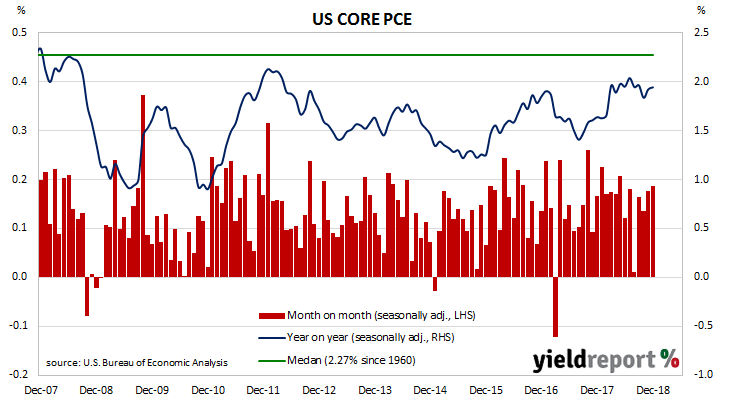One of the US Fed’s favoured measures of inflation is the change in the core personal consumption expenditures (PCE) price index. After hitting the Fed’s target at 2.0% in July, the annual rate then slipped a little and then hovered around 1.9% until the end of 2018.
The latest figures have now been published by the Bureau of Economic Analysis as part of the December personal income and expenditures report. Note this report has been delayed by the US federal shutdown and it would have normally been released at the end of January rather than the end of February. At +0.2% for the month, core PCE inflation was the same as November’s +0.2% but more than the flat result expected. On a 12 month basis, the core PCE inflation rate registered 1.9%, the same as November’s comparable rate.

The core version strips out energy and food components, which are volatile from month to month, in an attempt to identify the prevailing trend. It’s not the only measure of inflation used by the Fed; it also tracks the Consumer Price Index (CPI) and Producer Price Index (PPI) from the Department of Labor.
The ISM February PMI was released on the same day, so the individual reaction of financial markets to each of the reports is difficult to discern. In any case, US markets reacted by sending Treasury bond yields higher, with expectations of tighter monetary policy (in a technical sense) and a stronger US dollar.

